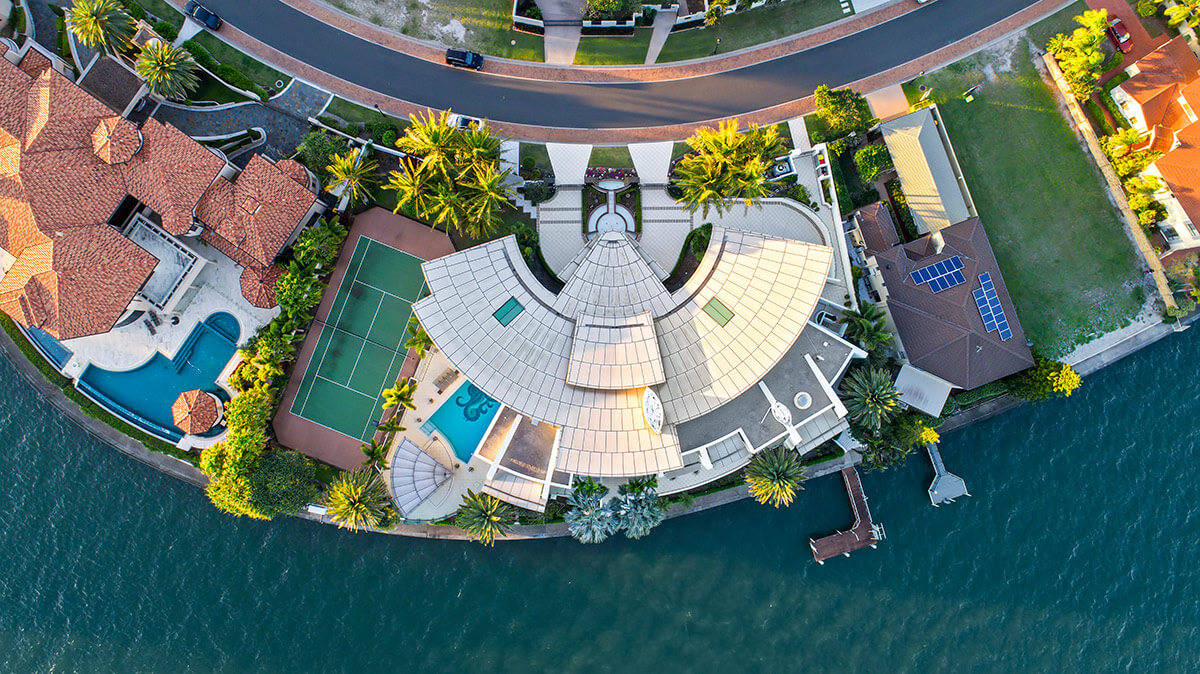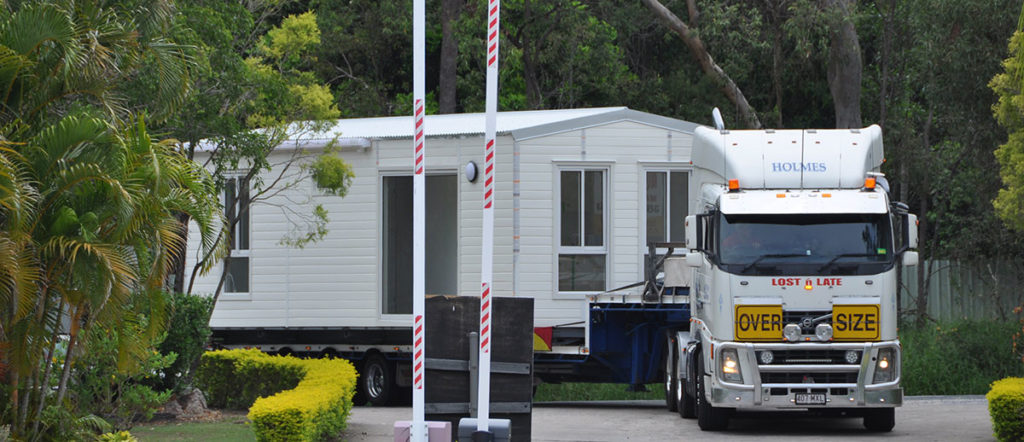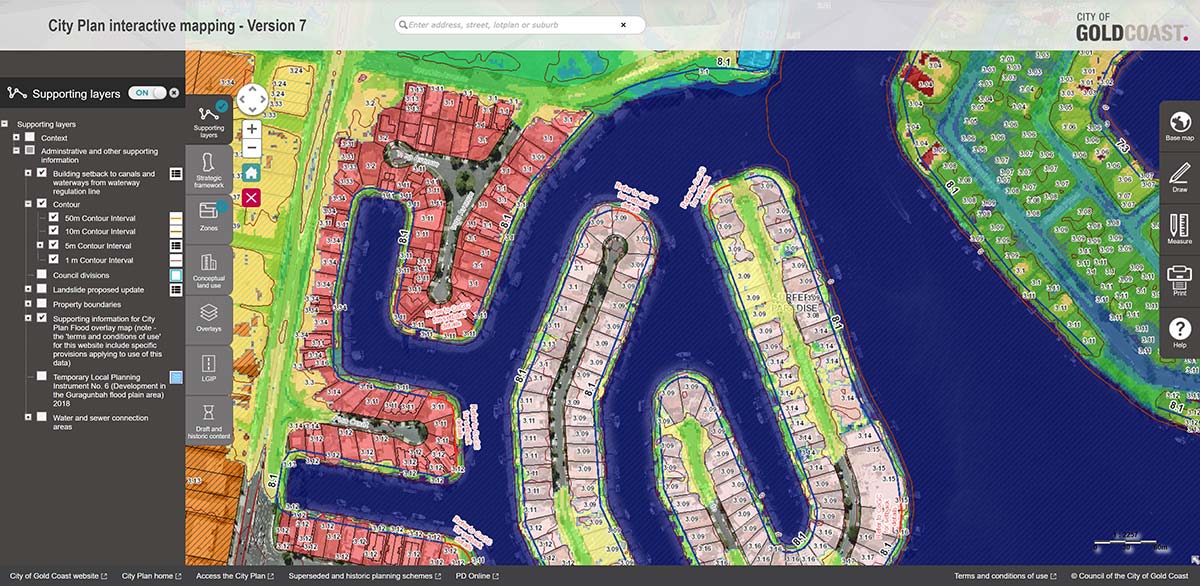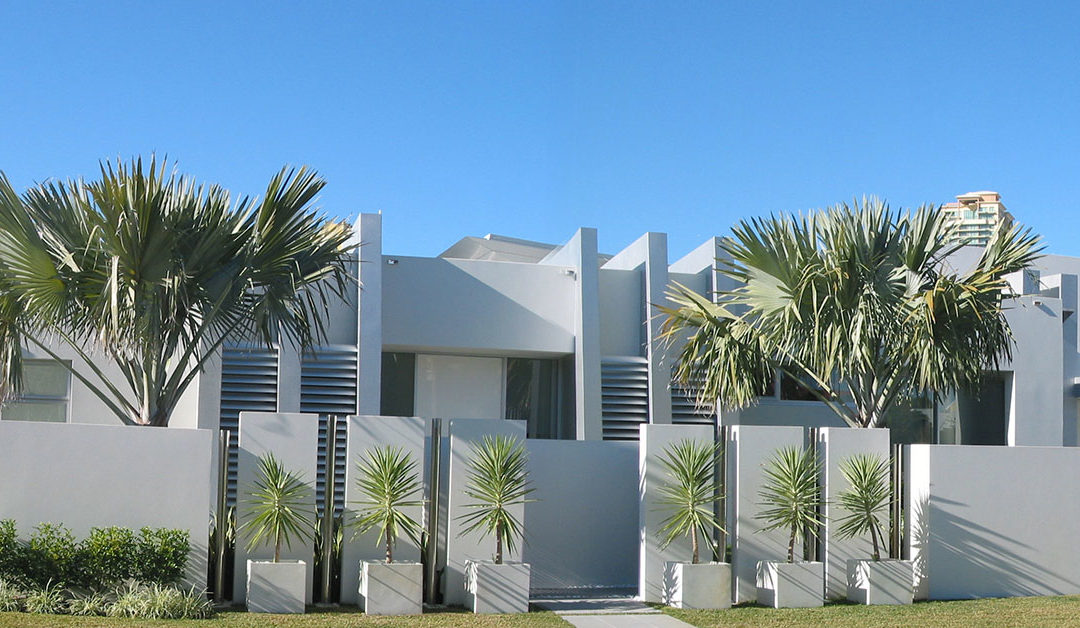We are fortunate on the Gold Coast to have reasonably lenient planning restrictions in relation to residential design. Unlike many larger cities in Australia that have strict codes governing heritage conservation, building aesthetics, right to views, over shadowing etc, on the Gold Coast we have much more design freedom.
Whilst legislation is always changing, the following overview provides a guide as to some of the key building code and planning constraints to be aware of when designing a free-standing home on a typical residential lot on the Gold Coast.
Zoning
There are numerous zones within the City of Gold Coast that allow for the construction of private residential dwellings. The online City Plan interactive mapping site offers a quick and simple method of checking a property’s zoning by simply inputting the street address or title description.
This produces a City Plan property report confirming the site’s zoning and related planning guidelines. This review is based primarily on building within the low-density residential zone (LDR).
Some properties within defined residential estates may also be subject to additional specific planning covenants.
Setbacks
These are governed by both the National Construction Code (NCC – formerly known as the Building Code of Australia – BCA) and the City Plan.
The NCC is principally concerned with fire safety, health and amenity, safety and sustainability issues, whilst the City Plan primarily addresses the impact of building form on public and private amenity.
Street Setbacks
The standard setback requirement is 6m. Some structures including carports & gatehouses can be built within this setback zone up to the property boundary with minor relaxation approvals.
Corner lots with dual frontages typically allow a reduced setback of 4.5m or more to the secondary street.
Estate covenants may relax or increase these setbacks, and often dictate that the face of the garage is setback further than the front of the house itself.
Side & Rear setbacks
The NCC permits zero setbacks with specified fire rated construction, and 900mm with standard construction.
The City Plan mandates 1.5m for single storey buildings up to 4.5m high, 2m for buildings between 4.5m – 7.5m high (2 storey), and an extra 0.5m for every 3m height exceeding 7.5m.
Waterfront Setbacks
Since large areas of the Gold Coast have been built on swamps and flood plains associated with the Nerang River, flooding in extreme weather events is possible.
To minimise the risks of inundation to properties on the Gold Coast, extensive flood modelling has been undertaken. This is based on the ability of flood waters to spread over a portion of waterfront land to disperse the excess water without creating a damming effect upstream. The existing profile of the waterfront land cannot be built up unless an equivalent volume of land is excavated. Modification to the land profile is subject to hydraulic modelling which must confirm no adverse impacts result.
All waterfront properties are subject to a specified setback based on this modelling which varies depending on the property’s location. These prescribed setbacks can be accessed via the City Plan’s interactive mapping.

Swimming pool and decks constructed within waterfront setback, Sorrento Residence
Whilst dwellings are not permitted within this setback zone, certain hard landscape elements such as swimming pools, decks and pergolas can be built in this waterfront area subject to strict controls limiting the reduction in flood storage. Details of these controls can be found in a previous article
https://leadesign.com.au/architect/what-you-need-to-consider-before-designing-your-home/
Easements
Some properties may incorporate an easement within the property boundaries. These are often created to allow utility services to cross the site, and require clear access to be maintained for potential future repairs. This typically precludes any built structure within the easement, and can also require specific setbacks to avoid structural building loads damaging underground services.

Chateau de Reves, Sovereign Islands
Site Cover
This limits the size of the building footprint on the site and is defined as.
The proportion of the site covered by a building(s), structure(s) attached to the
building(s) and carport(s), calculated to the outer most projections of the
building(s) and expressed as a percentage.
The term does not include:
- any structure or part thereof included in a landscaped open space area such as a gazebo or shade structure
- basement car parking areas located wholly below ground level
- eaves and sun shading
This is limited to 50% of the site area.
Density
This governs the number of residences permissible on a property.
In the LDR zone this is restricted to one home per site, however it is related to a minimum lot size of 400m2.
Consequently, if a larger property can be subdivided into smaller lots, then more houses may be permitted.

Modular Granny Flat being delivered to site, Chambers Flat.
Secondary Dwellings
As the population of the Gold Coast continues to grow creating an ever-increasing demand for new housing, the limited supply of developable land is putting pressure on Governments to increase the density of existing residential land. (https://leadesign.com.au/architect/living-in-21st-century-australia/)
A logical solution would be to allow for more than one dwelling to be constructed on existing residential properties.
It is possible to obtain approval for secondary dwellings or Granny Flats, however they are currently subject to stringent conditions.
These typically limit the size to a maximum of 80m2, they must be built within 10m of the principal residence and can only be occupied by family or relatives – not rented out commercially.
For more detail refer to: https://cityplan.goldcoast.qld.gov.au/ePlan/#Rules/0/129/1/5387
Height
Whilst the Gold Coast is renowned for its extensive high rise skyline, houses built within the LDR zone are strictly limited to a maximum height of 9m and 2 storeys.
Concession for a partial third storey can be approved if it is under 9m in height, and the size is also limited to 50% of the second storey area.
A basement is not considered a storey as long as it does not exceed 1m above ground level.
Whilst this is relatively straight forward on flat sites, great care needs to be taken on sloping sites to ensure that these height constraints are not unwittingly exceeded.

City Plan Interactive map showing waterfront setback and flood level overlays.
Flood Levels
As outlined above, large portions of the Gold Coast are subject to flooding.
This is not just limited to waterfront properties with City Plan flood maps identifying all properties at risk.
These maps designate a specific predicted flood level during a Q100 storm event for every property within a flood zone. Habitable floor levels for new homes or major renovations then need to be constructed 300mm higher than this relative level.
In some cases that can require extensive filling of the site with implications on access (steps or stairs required), building heights, relationship to outdoor living spaces and associated additional costs.
Conclusion
These design guidelines are intended only as a general overview of the development constraints that apply to typical residential properties on the Gold Coast.
The town plan is performance based, so concessions may be granted on merit, subject to either a code or impact assessable development application.
It is highly recommended that you seek professional advice before purchasing a property or commencing design to ensure you are aware of any site specific limitations that could restrict your ability to build what you want on the land.
Lea Design Studio would be happy to assist in this regard.
Give us a call on 07 5660 6176 or book an appointment.
You might also be interested in...

Exploring the Artistic Side of Architecture
Explore architecture’s artistic soul through sketches and drawings. See how these visual tools bring architectural visions to life.

Housing Affordability
Housing affordability is again a hot topic with interest rates gradually rising. Which generation has it better, and what does the future hold?










